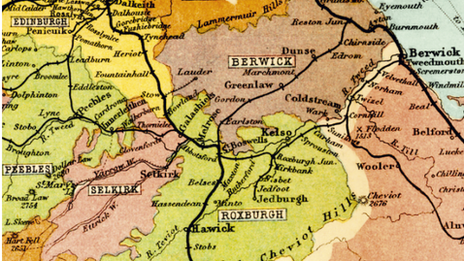What happened to England's forgotten railway stations?
- Published
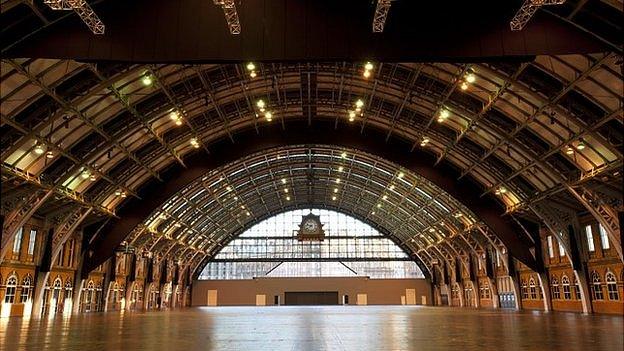
Conferences and exhibitions are now held at the former Manchester Central station
In living memory, hundreds of railway stations have closed across the country and have since been abandoned, demolished or converted to other uses. But many former passengers still remember the days when they were a hive of activity.

Manchester Central: Closed in 1969
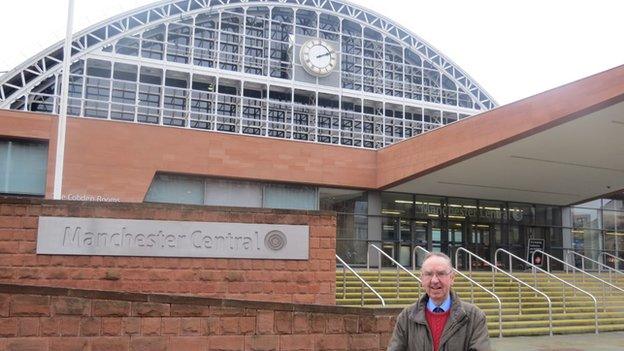
Eddie Johnson remembers Manchester Central being "very run down" before it was closed
Manchester Central has been converted from a station into a national conference and exhibition centre.
"It wasn't the busiest of termini but it was an impressive building which had one single arch and was based on St Pancras," said railway historian Eddie Johnson.
He said it opened in the late 19th Century when it was an "important and big station" and closed in 1969.
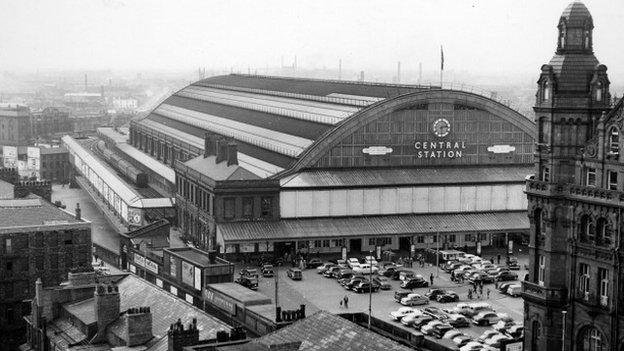
Railway historian Eddie Johnson said the station was based on St Pancras
Mr Johnson said people "weren't that vociferous" about the closure because it was "very run down and few people used it" towards the end.
"There wasn't the appreciation of buildings in the 1960s as there is today. It was quietly taken away, I suppose."
Peter Morgan-Crockett, 76, from the Isle of Wight, was the clerk of works on the redevelopment of Manchester Central between 1983 and 1986 and said it "certainly was the biggest build he had worked on and came to over £20m".
During the redevelopment, Mr Morgan-Crockett said a time capsule was found above the clock on the North Facade, which was completed in 1886.
"It contained a Cheshire Lines Committee letter recording the names of those involved in the construction of the clock.
"The letter finishes with the words 'God Save The Queen', which of course refers to Queen Victoria."
Mr Johnson said: "Turning it into an exhibition centre was an expansionist idea, as it was the first place in Manchester where businesses or even the government could host conferences.
"It was a very forward thinking move for the city and helped expand Manchester's reputation nationwide."

Railway cuts
Many stations closed as a result of the Beeching report, which aimed to make the railways profitable
In living memory, other lines closed as services were withdrawn, stations relocated or because of financial restraints
Some lines were closed with very short notice - such as the Leominster to Bromyard branch line, in Herefordshire, which closed in 1952 in just three months.
Source: BBC News/National Railway Museum

Bath Green Park Station: Closed in 1966

Paul Baulch runs a market stall at the site of the former station
Paul Baulch runs a market stall in the old station where he used to go trainspotting.
"Nowadays, kids play on computer games; back then all the boys used to go to the railway stations and go trainspotting," he said.
The station closed when Mr Baulch was 23 years old and he said he remembered "a lot of local pressure to save the station, as there was an awful lot of affection for the line".
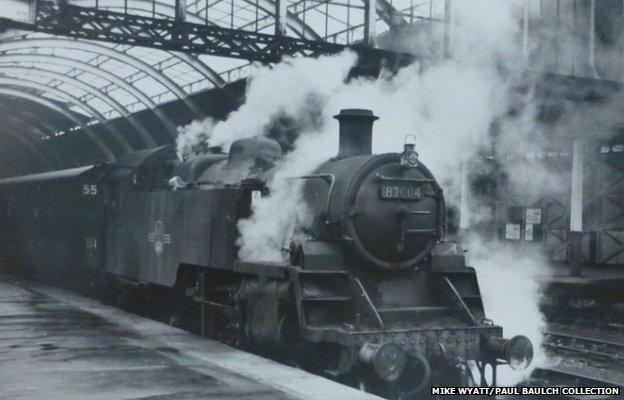
Paul Baulch remembers "a lot of local pressure to save the station" in the 1960s
Mr Baulch, 71, said his favourite memory was when he had a tour of the station engine shed, which was a building he and his friends would "always try and sneak in" but get "turfed out" of because they were not allowed in without permission.
"But one time, I was at the station with my father and a supervisor and we had a special conducted tour and cups of tea. My friends were all really jealous," he said.
Mr Baulch, who is the curator of Avon Valley Railway Museum, runs a market stall once a week at the old station.
"It is strange to have a stall at Bath Green Park after all this time, but I am really pleased that such a fine station has survived and been restored to such a high standard," he added.
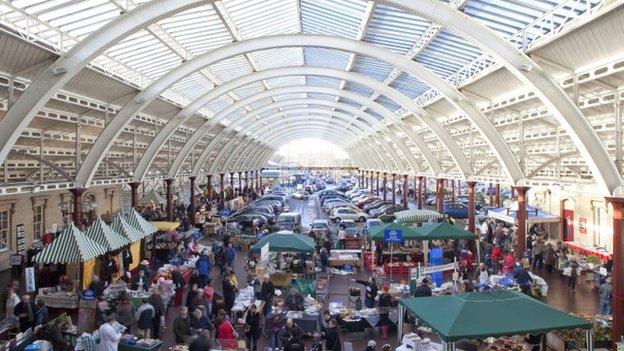
In the 1980s, the former station was restored as a retail and market area

Liverpool Central, High Level Station: Closed in 1972
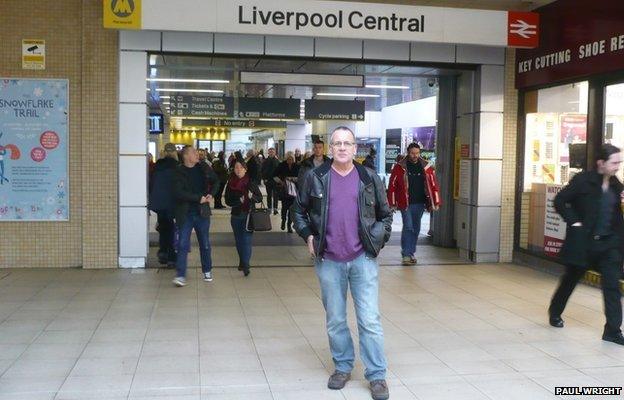
Les Fifoot standing outside the entrance to the current Liverpool Central, where the former station buildings once stood
On some occasions during the winter months of the early 1950s, Les Fifoot remembers getting on the railway carriages at Liverpool Central almost in complete darkness.
He said: "Before 1958, all passenger trains along the line were hauled by steam locos which did not have power generation facilities.
"All the coach lighting was powered from rechargeable batteries and each coach had its own system, with a pulley-driven dynamo from the wheel axles."
Mr Fifoot, 66, from Halton, said the lights could fail for a number of reasons including flat batteries.
He said the lighting in the station "was not the best" with platforms being illuminated by single bulb units strung from the roof at intervals.
"Furthermore, the building was grimy looking, so reflective surfaces did not help to create a bright appearance at night-time."
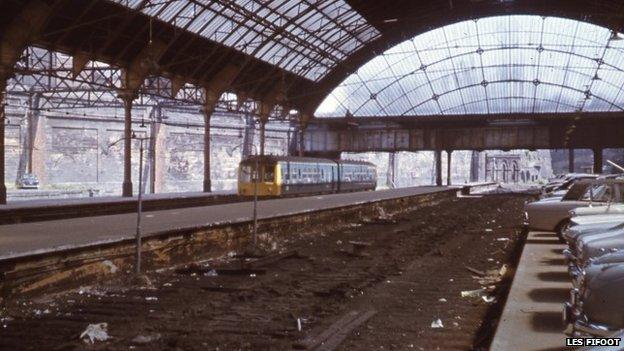
Les Fifoot visited Liverpool Central for the final time in 1971 after most of the services had been diverted
"The railway system was not in the best condition after World War Two. Stations were generally rundown, rolling stock was seldom clean, and all the trains were steam hauled until around 1958."
As a child, he said he could remember his mother "frequently reminding" him not to touch, or lean against the carriage windows, as they were dirty with smoke.
Mr Fifoot's final visit was in 1971 when the station was in "terminal decline as most of the train services had been diverted to Liverpool Lime Street".
"Most of the tracks had been lifted and some of the disused platforms were being used for car parking. It was a sad end for a once busy train terminus."
Mr Fifoot said all the original infrastructure and buildings have since been demolished, but the entrance to the current Liverpool Central - which is part of the Merseyrail network - is in the same place.
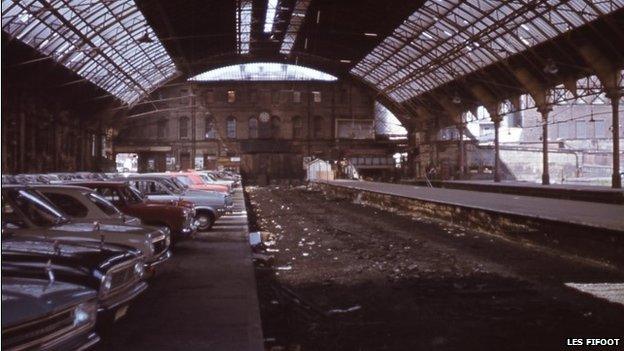
In the early 1970s, Liverpool Central's disused platforms were used for car parking

Marazion, Cornwall: Closed in 1964
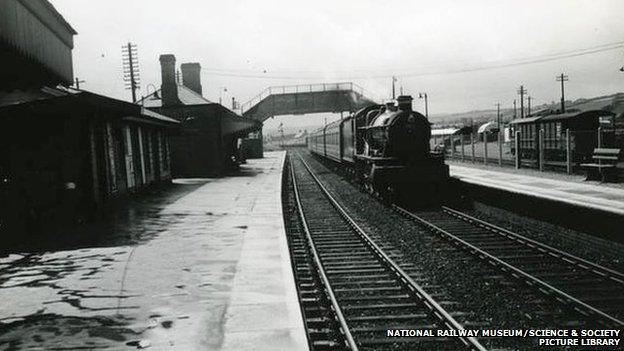
Marazion Station was a victim of the Beeching cuts
As a child, Roger Winnen was part of the Station Wall Gang, which sat next to Penzance Station trainspotting.
"When trains arrived at Penzance all rubbish, including empty bottles, were left in crates prior to removal.
"These bottles were refundable. Taking them to a shop we got 3d back from the bottle."
Mr Winnen said he used the money to pay for his journeys on the railway, in particular to Marazion, where he would spend afternoons in the summer months.
"Looking in the 1958 summer timetable second class rail travel was charged at 2d per mile. A return journey from Penzance to Paddington would have cost about £5."
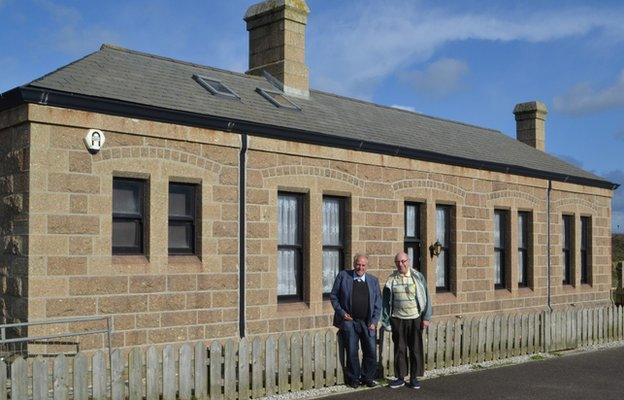
Roger Winnen used to watch trains at Marazion station and Terry Addicoat used to work there
Mr Winnen, 69, lives about 330ft (100m) from the abandoned station that closed in October 1964.
"Five other stations closed in Cornwall on the same day as part of the Beeching cuts.
"It was a typical traditional railway station and was a handy stop for St Michael's Mount."
Mr Winnen, who became interested in trains because his father was a carriage cleaner, said the station was busier with goods, rather than passengers and said "train loads of broccoli and potatoes would leave Marazion".
Terry Addicoat used to work at Marazion Station as a porter during his teenage years.
"It was a buoyant station. Farmers used to bring flowers and cabbages and vehicles used to queue on the road and wait for it to be weighed and loaded on the train heading to markets in Birmingham and London.
"We had to man the railway crossing and wave red and green flags to stop people and traffic crossing."
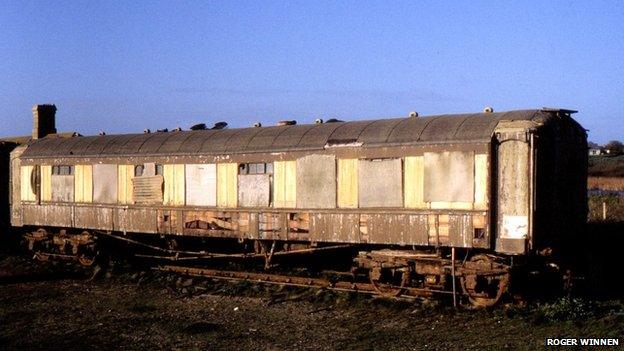
Three Pullman coaches, which remained at Marazion, have since been converted into tourist accommodation
Mr Addicoat, 72, from Penzance, said one of his fondest memories was when snow fell at the station and he and another employee rolled a large snowball.
"We put it on top of the chimney of the little hut, which was an office at the end of the station.
"Because it was a coal fire, the man who told other stations how many wagons and produce were leaving Marazion, was smoked out of his hut. He came running out," Mr Addicoat added.
The former booking office and waiting room still remain, but three Pullman carriages which had remained at Marazion have since been moved to Petworth, Sussex and are now used as accommodation for tourists.

Liverpool Exchange: Closed in 1977.
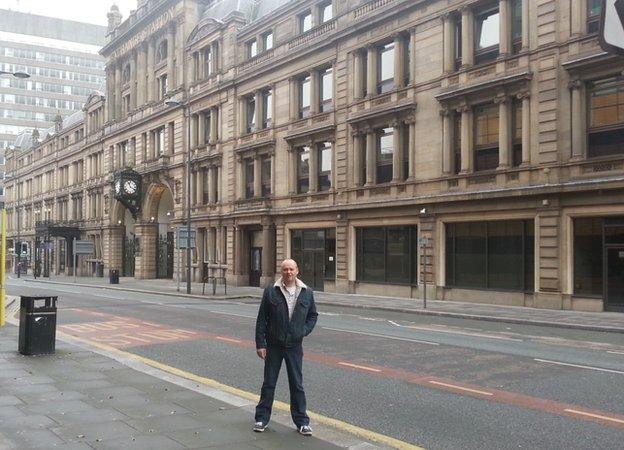
Paul Wright said he believed the Beeching cuts had an influence on the station before it closed in the late 1970s
Paul Wright first visited the station in the late 1960s when he was just five years old. He remembers it being "dull and cavernous" and believed that it probably had not recovered from the war.
"We travelled on electric trains that dated back to the 1940s and the train would lurch and rock as it left Liverpool Exchange.
"I would be standing up looking out of the window and my young legs would struggle to keep me upright. I was thrown about quite a bit."
By the mid-1970s, Mr Wright, 50, from Wallasey, said Liverpool Exchange was "certainly a shadow of its former self, but I loved it".
"Only four platforms of the original 10 were still being used, much of the glazing from the roof was missing and on Saturday afternoons it was relatively quiet."

By the mid 1970s, Paul Wright said Liverpool Exchange was "certainly a shadow of its former self"
Mr Wright said he believed the decline was partly due to the Beeching cuts.
"Although it was not earmarked for closure under the plans, many of the station's services were axed and some of the destinations vanished from the railway map.
"On the last day no trains actually ran and buses were put on instead.
"I was sad to see Exchange go but it was replaced by the Merseyrail link line which is now a bedrock of the thriving Merseyrail system.
"Thankfully, the station frontage was also saved and used as an office."
- Published27 March 2013
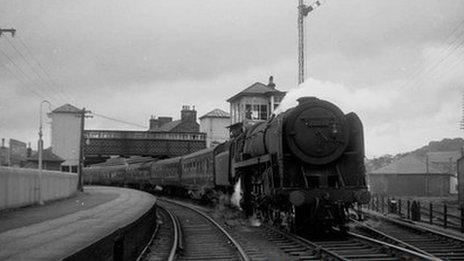
- Published25 March 2013
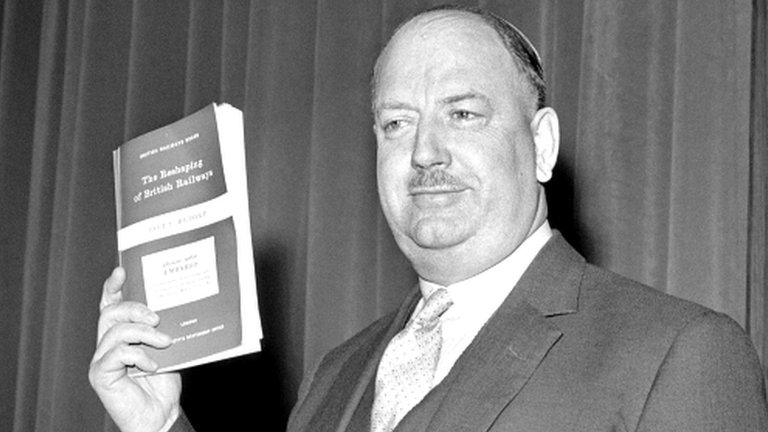
- Published8 April 2012
